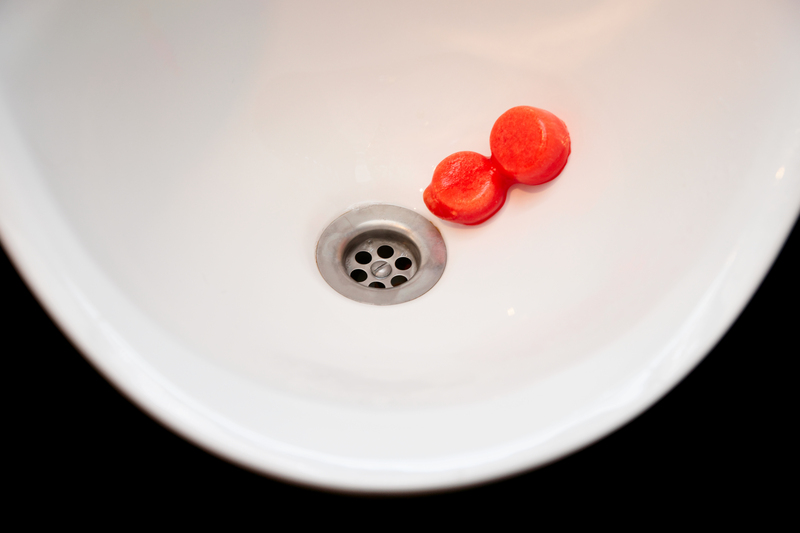Step-by-Step Guide to Effortless Window Washing Techniques
Posted on 28/06/2025
Step-by-Step Guide to Effortless Window Washing Techniques
Welcome to the ultimate step-by-step guide on effortless window washing techniques. Whether you're a homeowner, renter, or office worker, having sparkling clean windows can completely transform the ambiance of your interior and add curb appeal to your building. In this comprehensive article, you'll discover easy, efficient, and effective ways for cleaning windows both inside and out, leaving them streak-free and crystal clear with minimal effort.

Why Clean Windows Matter
Many people underestimate the impact of clean windows. Not only do they elevate the beauty of your premises, but they also:
- Let in more natural light, making rooms brighter and healthier
- Enhance the overall appearance of your home or office
- Prolong the lifespan of the glass by removing corrosive contaminants
- Improve your mood and productivity with unobstructed views
To reap these benefits, adopting efficient window cleaning methods is key. Below, we break down the best window washing steps to achieve professional results without hassle.
Essential Tools and Supplies for Effortless Window Cleaning
Using the right supplies can make all the difference and turn window cleaning from a chore into a breeze. Here's what you'll need for the most effective window washing techniques:
Basic Supplies Checklist
- Squeegee - Invest in a high-quality rubber squeegee for streak-free results.
- Soft, lint-free microfiber cloths - These are critical for drying and touch-ups.
- Bucket - Fill with a mix of cleaning solution and warm water.
- Sponge or scrubbing pad (non-abrasive)
- Window cleaning solution or a homemade mix (see next section)
- Extension pole (for high or hard-to-reach windows)
- Small brush or old toothbrush (to clean window tracks and frames)
- Gloves (to protect your hands and provide better grip)
Homemade Window Washing Solutions
- Mix one part vinegar to two parts water for an eco-friendly solution.
- Combine two tablespoons of dish soap to a gallon of warm water for greasy buildup.
- For a streak-free finish, add a splash of rubbing alcohol to your cleaning solution.
Avoid using ammonia or abrasive cleaners, as they can damage the glass or window frames over time.
Pre-Cleaning Steps: Set up for Success
Before you begin the actual window washing process, a little preparation can save you time and ensure safety:
- Move nearby furniture and protect flooring with a cloth or drop sheet.
- Dust blinds, curtains, and window sills first to prevent grime from settling back onto the glass.
- Check the weather - avoid washing windows in direct sunlight to prevent streaking caused by rapid drying.
- Ensure you have all your tools and cleaning solution assembled and within reach.
Step-by-Step Window Washing Techniques
Step 1: Remove Loose Dust and Debris
Begin with a dry microfiber cloth or a small brush to wipe away cobwebs, dust, and loose dirt from the window frame and glass. This key step prevents mud from forming when liquid cleaner is applied.
Step 2: Apply Cleaning Solution
Dip a sponge, scrubber, or microfiber cloth into your chosen window washing solution. Wring out excess moisture, then gently wipe the glass from top to bottom, paying extra attention to any spots with stubborn dirt or fingerprints.
- Pro tip: Tackle one window at a time to prevent the cleaning solution from drying prematurely.
Step 3: Scrub Problem Areas
For tough stains, water spots, or bird droppings, use a non-abrasive scrub pad or an old toothbrush dipped in your cleaning solution. Use gentle, circular motions to lift away buildup without scratching the glass.
Step 4: Squeegee for a Streak-Free Shine
The squeegee is your secret weapon for spotless, streak-free windows. Here's how to use it like a pro:
- Start at the top edge of the window and pull the squeegee horizontally across the glass.
- Wipe the squeegee blade with a clean cloth after each pass to prevent smearing.
- Repeat, overlapping slightly with each stroke, until you've covered the whole pane.
- For tall windows, use a vertical motion with an extension pole.
*If you don't have a squeegee, use a clean, dry microfiber cloth to buff the glass in circular motions.
Step 5: Dry and Detail
Once the bulk of water has been removed, take a fresh microfiber cloth to dry the edges and corners of the window pane, where excess liquid can linger. Inspect the glass for missed spots, smudges, or streaks and polish as necessary.
Step 6: Clean Window Tracks and Frames
Don't forget the details! Use a damp cloth or the small brush/toothbrush to scrub the window tracks, sills, and frames. Rinse and dry these areas thoroughly to prevent mold or mildew.
Effortless Window Washing for Special Situations
How to Clean High or Hard-to-Reach Windows
Cleaning upper-story windows can seem daunting, but with the right equipment, you can achieve spotlessly clean exterior windows safely:
- Use a telescoping extension pole with squeegee and scrubber attachments.
- Consider water-fed pole systems for multi-story homes (these use purified water for a spotless finish).
- If ladders are necessary, always prioritize safety and never overreach. Use a stable ladder and have a helper nearby if possible.
Dealing with Special Glass Types
Certain windows, like tinted, frosted, or stained glass, require a gentle touch:
- Use only mild, ammonia-free cleaners.
- Avoid scraping, abrasive pads, or harsh chemicals.
- Always check the manufacturer's guidelines before using any cleaning products or techniques.
Tips to Maintain Sparkling Clean Windows Longer
- Regular Cleaning: Schedule window cleaning at least twice a year, or more often in urban or coastal environments.
- Wipe down windows after rainstorms to prevent water spotting and mineral buildup.
- Keep window screens clean to stop dirt from transferring onto the glass. Remove and wash screens with soapy water, rinse, and dry before replacing.
- Use window treatments or awnings to reduce exposure to dust, pollen, or water splashes.
- Address condensation and leaks promptly to avoid mold and mildew growth on or around windows.
Common Window Cleaning Mistakes to Avoid
Even with the best intentions, certain missteps can undermine your window cleaning efforts. Avoid these pitfalls for consistently clear results:
- Using too much cleaning product, which leaves a residue leading to streaks.
- Cleaning in direct sunlight or on hot days, causing the solution to dry too quickly.
- Skipping the pre-cleaning dust removal step, resulting in muddy smears.
- Neglecting window sills, tracks, or frames, which can harbor persistent grime.
- Using dirty cloths or tools, which redeposit dirt rather than remove it.
Advanced Techniques for Effortless Window Washing
Professional Secrets for a Flawless Finish
- Buff with old newspaper: After the glass is cleaned and mostly dry, buff with balled-up newspaper for a final polish that removes lingering streaks and adds shine.
- Try a rain repellent: Commercial glass treatments designed for auto windshields can be applied to exterior windows to repel rain, minimizing water spots between cleanings.
- Spot-treat mineral deposits: For hard water stains, use a paste of baking soda and water, gently rubbed onto the spot, then rinsed clean.
Eco-Friendly and Safe Window Washing
Whenever possible, choose sustainable, non-toxic cleaning solutions and reusable cloths. Microfiber is a great alternative to disposable paper towels, and vinegar-based sprays deliver impressive cleaning results without harsh chemicals. Always ventilate the area during and after cleaning, especially when using commercial products.

Frequently Asked Questions About Window Cleaning Techniques
How often should I wash my windows?
Most experts recommend washing residential windows at least twice per year--spring and fall are popular times. However, factors such as traffic pollution, salt spray (if you live near the ocean), and weather events can increase the necessary frequency.
Is it better to use commercial cleaners or homemade solutions?
Both can be effective. Homemade mixes with vinegar and water are eco-friendly and great for regular maintenance, while commercial cleaners might be best for especially dirty or greasy windows.
Can you use paper towels to clean windows?
While convenient, paper towels often leave lint and fibers behind. For a truly streak-free finish, use microfiber cloths, squeegees, or even old newspaper for the final polish.
How do you prevent streaks on windows?
To avoid streaks, always use a clean squeegee, buff dry with a lint-free cloth, and avoid cleaning in direct sunlight. Wipe the squeegee blade after each stroke and work from the top down.
Conclusion: Mastering Effortless Window Washing Techniques
Clean, sparkling windows are well within reach when you follow the right steps and use quality tools. By adopting these step-by-step window washing techniques, you'll enjoy a brighter home, healthier indoor environment, and enhanced curb appeal--all with less time and effort. Remember: consistency is key! Regular maintenance ensures your windows stay spotless, improves your view, and preserves your property value.
So grab your squeegee, prepare your solution, and put these easy methods into practice. You'll be amazed at the difference professional-level window washing methods can make!
For more cleaning tips and household guides, don't forget to check our other articles!




